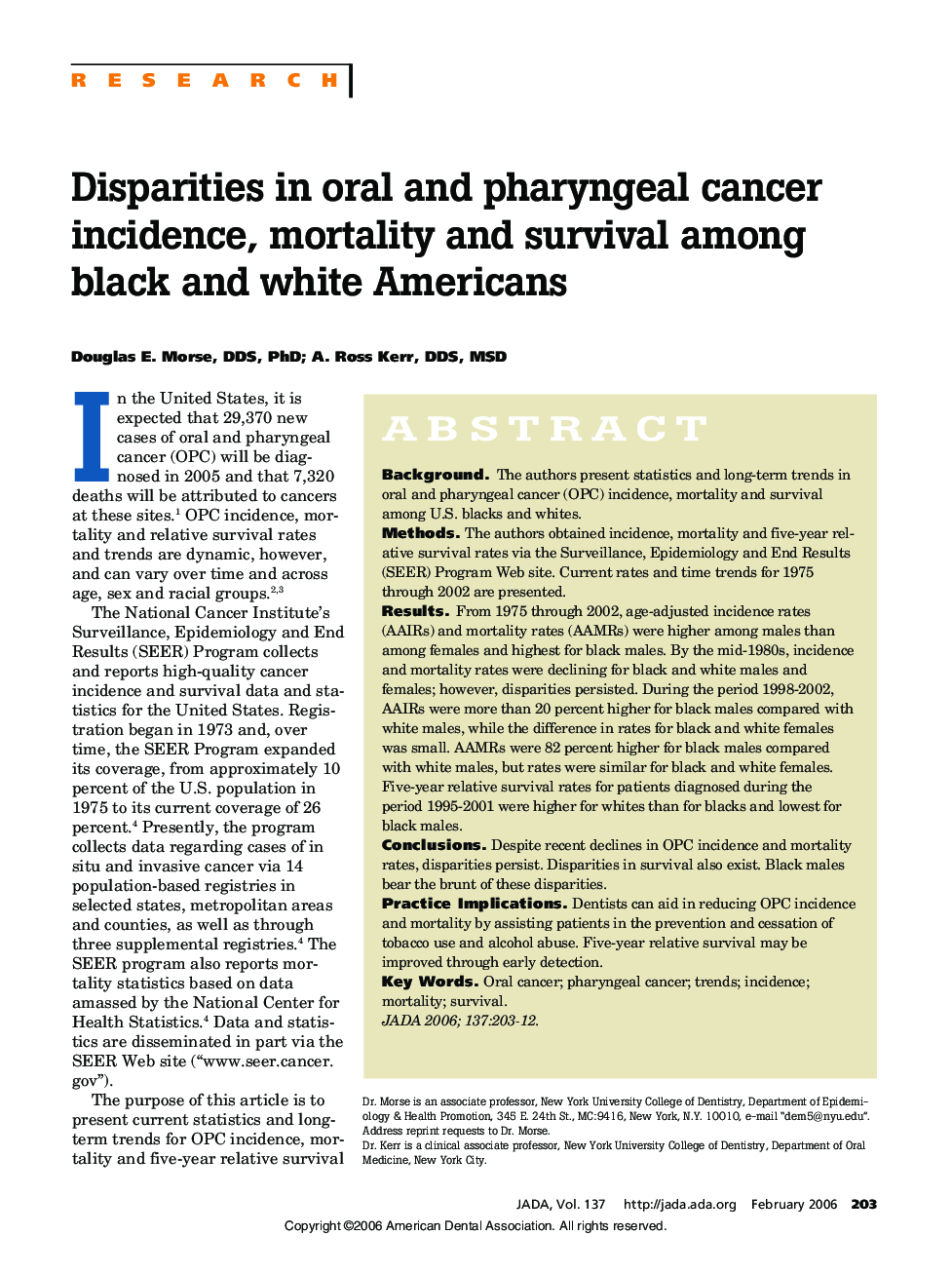| Article ID | Journal | Published Year | Pages | File Type |
|---|---|---|---|---|
| 3140318 | The Journal of the American Dental Association | 2006 | 10 Pages |
ABSTRACTBackgroundThe authors present statistics and long-term trends in oral and pharyngeal cancer (OPC) incidence, mortality and survival among U.S. blacks and whites.MethodsThe authors obtained incidence, mortality and five-year relative survival rates via the Surveillance, Epidemiology and End Results (SEER) Program Web site. Current rates and time trends for 1975 through 2002 are presented.ResultsFrom 1975 through 2002, age-adjusted incidence rates (AAIRs) and mortality rates (AAMRs) were higher among males than among females and highest for black males. By the mid-1980s, incidence and mortality rates were declining for black and white males and females; however, disparities persisted. During the period 1998–2002, AAIRs were more than 20 percent higher for black males compared with white males, while the difference in rates for black and white females was small. AAMRs were 82 percent higher for black males compared with white males, but rates were similar for black and white females. Five-year relative survival rates for patients diagnosed during the period 1995–2001 were higher for whites than for blacks and lowest for black males.ConclusionsDespite recent declines in OPC incidence and mortality rates, disparities persist. Disparities in survival also exist. Black males bear the brunt of these disparities.Practice ImplicationsDentists can aid in reducing OPC incidence and mortality by assisting patients in the prevention and cessation of tobacco use and alcohol abuse. Five-year relative survival may be improved through early detection.
